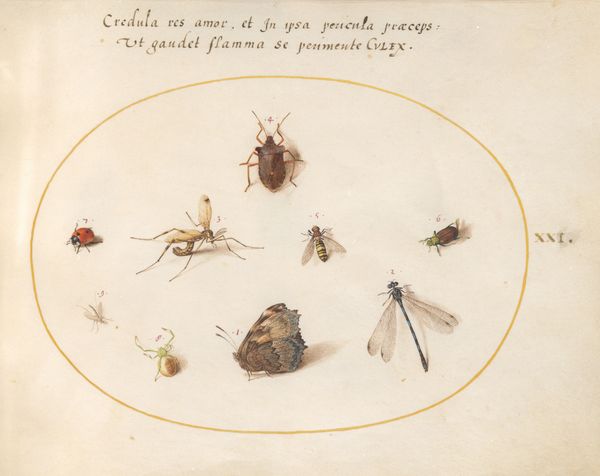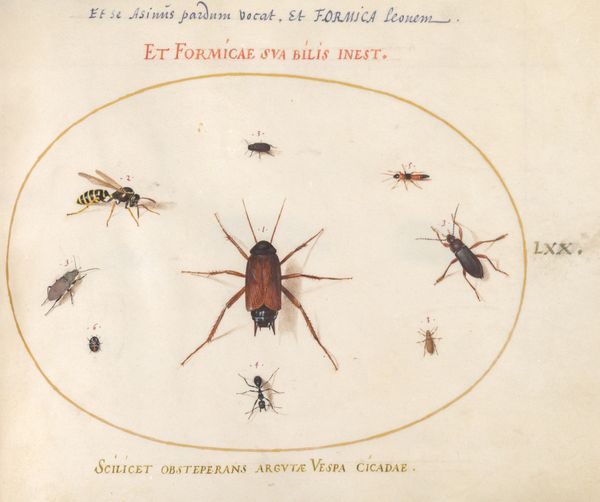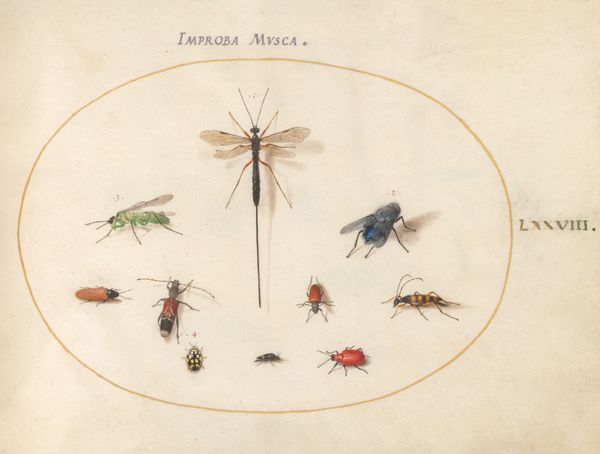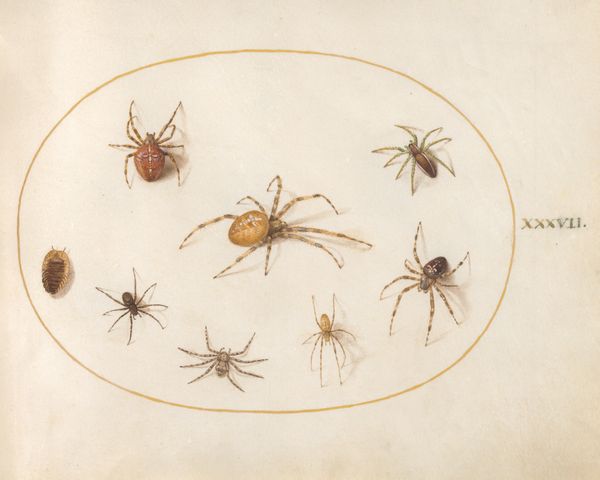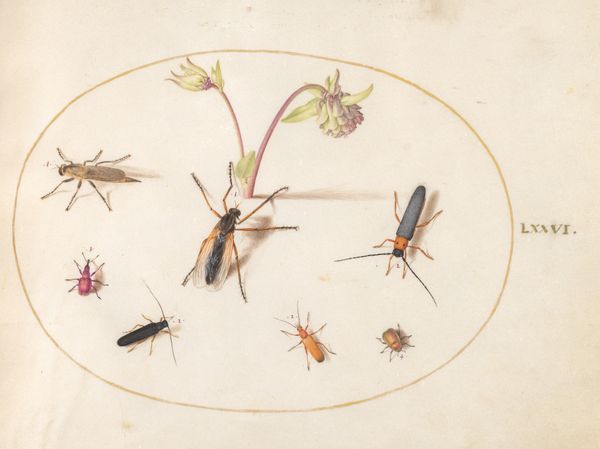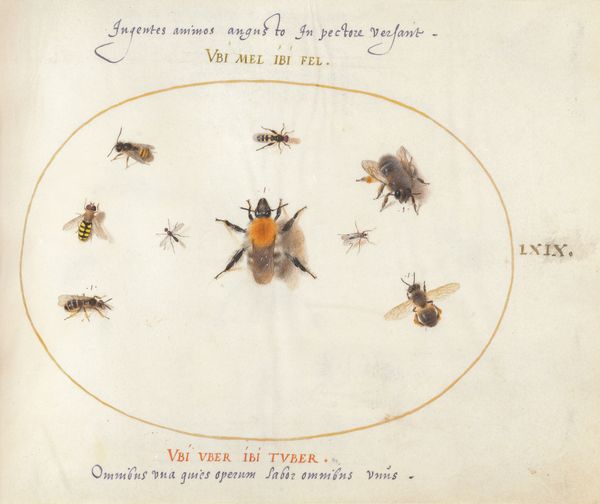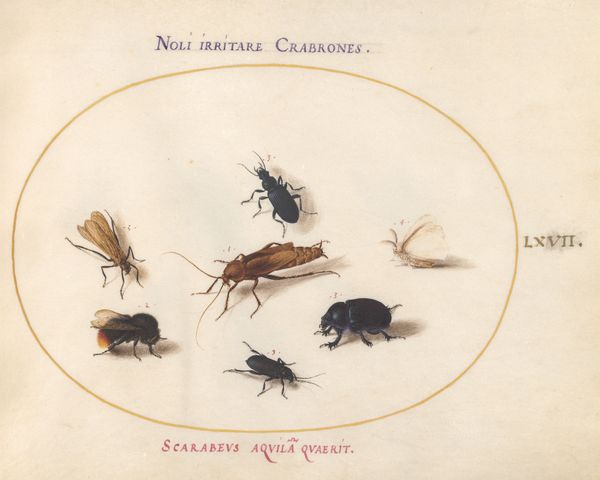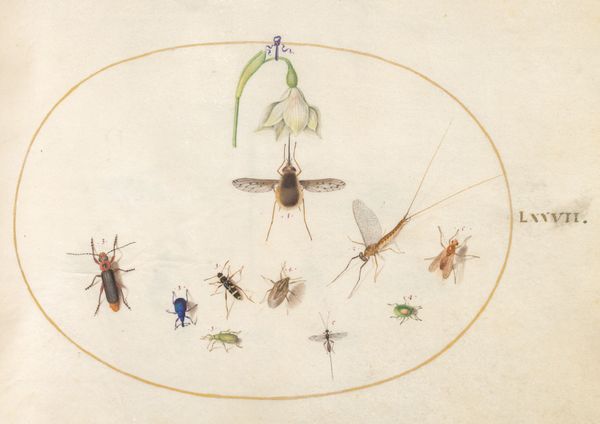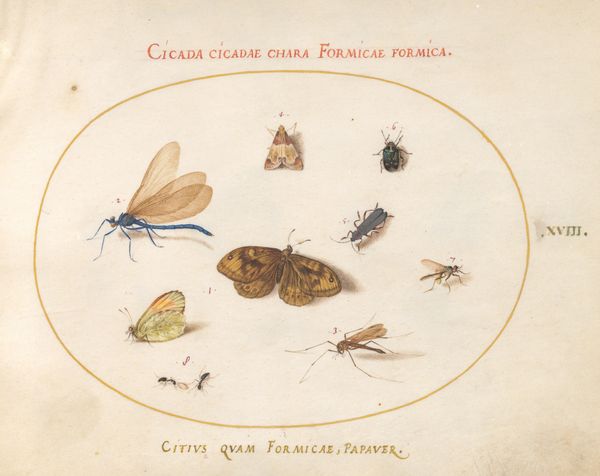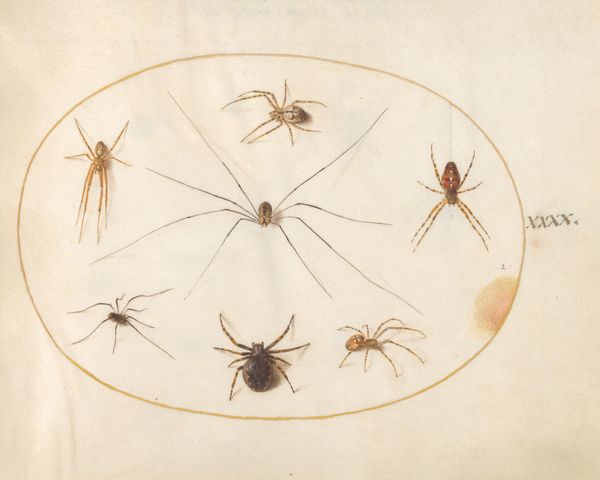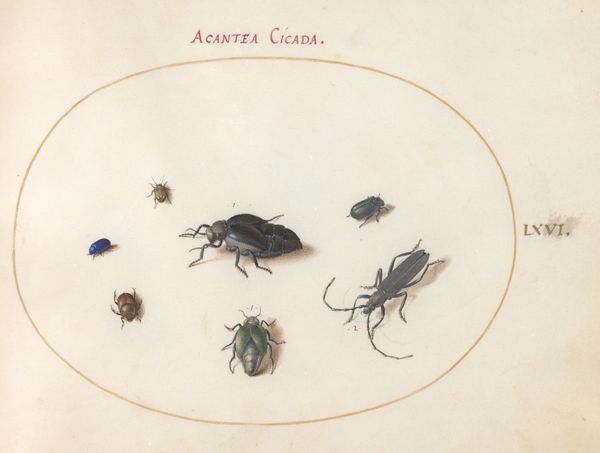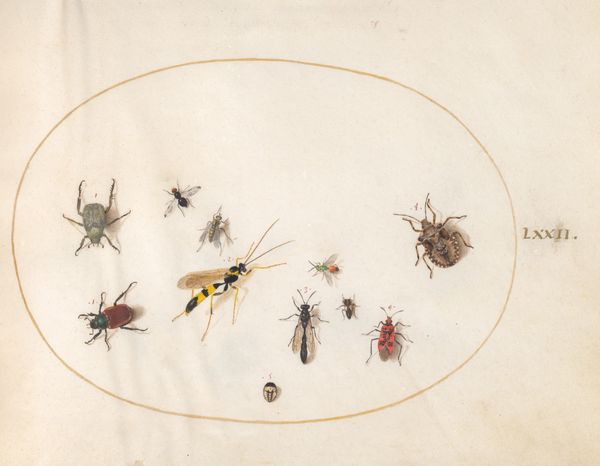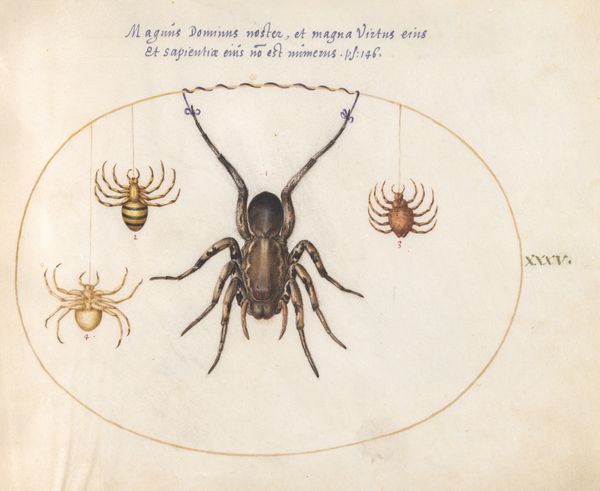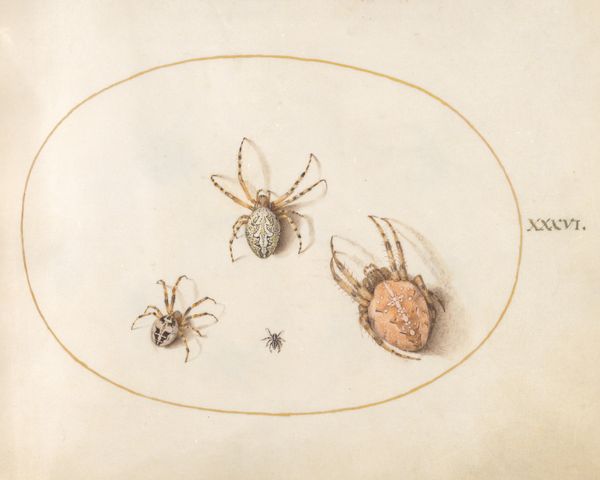
Plate 65: A Cricket Surrounded by Insects, Including a Ruby-Tailed Wasp c. 1575 - 1580
0:00
0:00
drawing, watercolor
#
drawing
#
water colours
#
11_renaissance
#
watercolor
#
naturalism
#
miniature
#
watercolor
Dimensions: page size (approximate): 14.3 x 18.4 cm (5 5/8 x 7 1/4 in.)
Copyright: National Gallery of Art: CC0 1.0
Editor: This is "Plate 65: A Cricket Surrounded by Insects, Including a Ruby-Tailed Wasp," created by Joris Hoefnagel around 1575-1580, done in watercolor and drawing. It strikes me as surprisingly detailed. What do you see in this piece? Curator: Beyond the impressive detail, I see a fascinating commentary on the relationship between humans and the natural world in the late Renaissance. Consider the text: “You who sing in the summer, dance in the winter.” The image can be seen to underscore humanity’s desire to classify and control nature, and how these attempts at organization often flatten the nuances of lived experience and complex interrelations. Does that resonate with you at all? Editor: It's interesting to think of it that way, especially given how neatly arranged everything is within that oval border. Like pinning down something wild. So you're saying that there's potentially a critical reading here? Curator: Absolutely. These natural histories were often commissioned by wealthy patrons, a sign of status but also playing a role in early scientific endeavors. I always think about who had access to such detailed observations and who was excluded, whose knowledge counted as "scientific," and how these decisions were then imbued with a gendered element as the domain was traditionally occupied by males. Whose voices and perspectives were marginalized or erased? Editor: Wow, that is a lot to unpack! I guess it reveals more than just insects. Curator: Precisely. It holds a mirror up to the values and power structures of the time, revealing much about the culture that produced it. Editor: I hadn’t considered those elements before. It definitely provides a richer understanding now. Curator: Indeed. It highlights the ways in which even seemingly objective representations of the natural world are embedded within broader cultural and historical contexts.
Comments
No comments
Be the first to comment and join the conversation on the ultimate creative platform.
